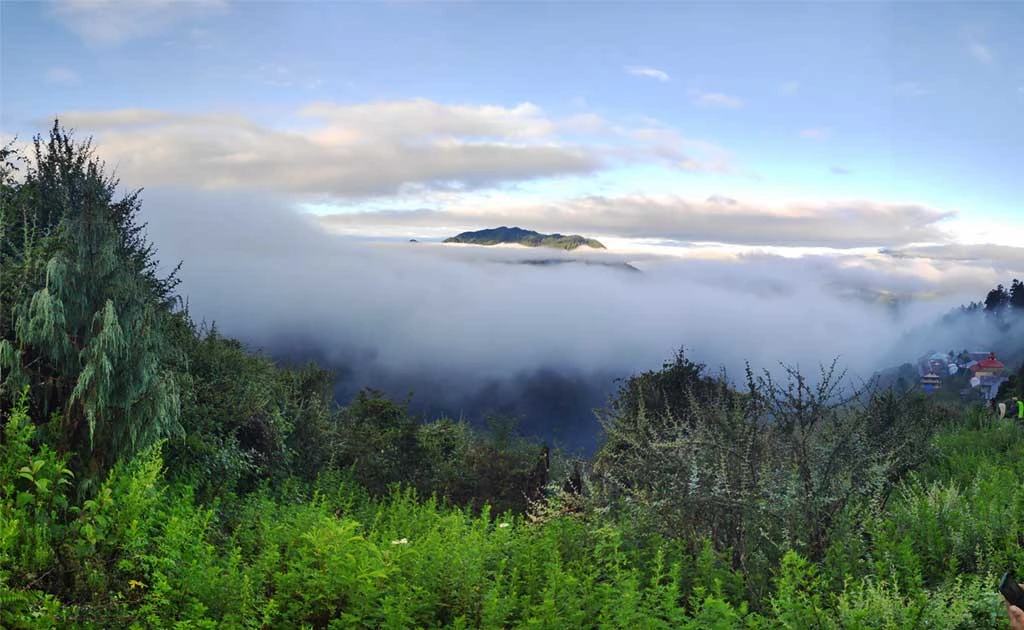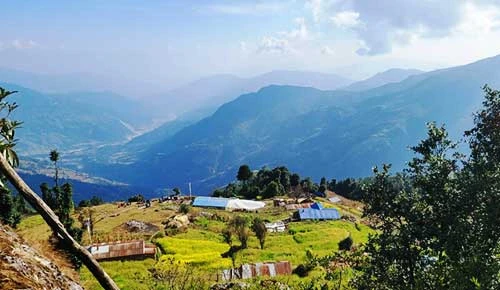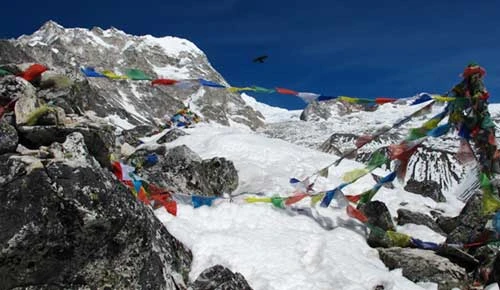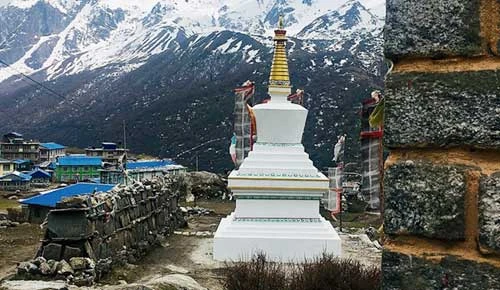Dhunche Travel Guide
Dhunche is a booming mountain town and the gateway to the Langtang area of Nepal. It is located 120 kilometers north of Kathmandu at an altitude of 2,030 meters above sea level and serves as the headquarters of the Rasuwa district. Many trekkers see Dhunche as the starting point for journeys into the Langtang Valley, to Gosaikunda Lake, or along the Tamang Heritage Trail. But Dhunche is more than just a starting point—it has its own unique charm. On clear days, tall green hills surround the town, and the Ganesh Himal and Langtang ranges can be seen in the distance.
Also, it makes it quite convenient, as it is also larger than the average trekking village situated at a higher altitude in the mountains. Tourists in this place can use hotels and guesthouses and visit local eateries besides small shops where emergency trekking supplies can be bought. People in Dhunche are hospitable, and they do not feel distant and isolated due to the effectiveness of mixing Tamang culture, the Buddhist influence, and market vibrancy. As you walked through its streets, you could see prayer flags, chortens, and the local people in traditional clothes before even starting to follow its paths.
Those that are going deep inside Langtang National Park also get their entry permits in Dhunche. This is what makes it a significant pass not only geometrically but also logistically. In case you are staying here only a night or prefer to stay a bit longer, Dhunche is going to familiarize you with the mountain life pace and get you ready for the treks you are about to make.
Best Time for Dhunche
The village is easily accessible, just like the rest of the Langtang region, and travelers can visit Dhunche throughout the year, though each season offers a different taste to the experience. Spring (March to May) and autumn (September to November) tend to be the most agreeable times, with stable weather, clear skies, and mountain views at their finest.
Spring (March–May)
It is one of the most famous periods to sightsee in Dhunche. Its climatic conditions are not extreme; it has warm days and cool nights. The hills and the forests near Dhunche are blooming with rhododendrons and wildflowers, and the landscape becomes colorful and vibrant. The skies are typically clear in the mornings and have an epic snapshot of the Ganesh Himal and Langtang ranges. This season is normally famously picked by trekkers due to the vibrant nature of the trekking trails and the liveliness of the villages.
Monsoon (June–August)
Monsoon season results in excess rainfall, making the forests around the area very green. There are waterfalls, which are swollen and rush so much that this landscape appears dramatic. But the roads to Dhunche could be muddy or blocked by landslides, and thus transport may not always run smoothly. In case you are not too picky about the leeches and the rain, you will find that the area will be less crowded and will be more natural in used air and greenery.
Autumn (September–November)
September and October (fall) are deemed to be the ideal times to visit Dhunche, as well as during a trek of the Langtang region. The dust gets washed off in the monsoon rains to leave clear skies and fresh air. Here, the season and the weather is quite mild, producing warm days and cold nights; mountain views are drop-dead gorgeous. Dashain, Tihar, and other festivals that take place in this season also occur during this season; hence, the traveler may get to experience colorful ways of celebration by the locals in such areas.
Winter (December–February)
Dhunche is rather cold in winter, particularly in the mornings and evenings, although the skies are normally clear. The mountaintop snow exudes a magical picture of whiteness. Going further up may be more difficult because of the covered trails in snow, but Dhunche itself is open. one can have a good time in winter. The town is calm, and landscapes of snow-covered mountains are exceptionally sharp and gorgeous.
Food and Accommodation Near Dunche
Dhunche is also the primary access point into the Langtang region, so it has better accommodation and food opportunities than smaller villages along the trail. There are simple guesthouses, teahouses, and some standard hotels that will be available to the travelers. Hotels tend to be modest, and beds are made of wood and blankets are white; rooms also share their washrooms. There isn’t much luxury, but the town is comfortable and warm, making it a good place to rest or acclimatize before moving to higher altitudes.
Dhunche food has traces of Nepali and Tibetan food. Dal Bhat (rice, lentil soup, vegetables, and pickles) is the staple dish served in nearly all lodges and is fresh, hearty, and served to overflowing. Noodles, fried rice, Tibetan bread, momos (dumplings), and sometimes international food such as pasta or pancakes are also available. As drinks, tea, coffee, and hot lemon are found aplenty, as well as local drinks. Supply in this region is more easily transported than in higher villages, so food is more varied and slightly less expensive than in the Langtang Valley at a deeper level.
To trekkers, Dhunche offers a refreshing stay as well as an experience of the local lifestyle. Being seated in a teahouse, drinking home-cooked food, and talking with people or fellow trekkers makes this halt more appealing. It is an efficient place and a cultural phenomenon.
How to Reach Dhunche
By Road from Kathmandu
The most common way to reach Dhunche is by road. Regular buses and jeeps leave from Machhapokhari Bus Park (Balaju, Kathmandu) early in the morning. The drive usually takes 6 to 7 hours, covering about 120 kilometers. The road passes through scenic countryside, small towns, and winding mountain routes before reaching Dhunche.
By Private Vehicle
Hiring a private jeep or car is also an option. While more expensive, it provides comfort, flexibility, and fewer stops along the way. This is a preferred choice for groups, families, or those wanting a smoother journey.
Major Attractions in Dhunche
- Gateway to Langtang National Park
- Scenic mountain views of Ganesh Himal and Langtang peaks
- Tamang and Sherpa cultural experiences
- Local monasteries and stupas
- Pilgrimage route to Gosaikunda
- Dhunche Bazaar and mountain town life
- Starting point for treks and nearby short hikes
- Traditional local architecture and prayer flags
- Observation points for sunrise and sunset over the mountains
- Nearby forests with rhododendron, pine, and oak trees
- Seasonal waterfalls and streams around the town
- Festivals and local celebrations in the village
Things to do in Dhunche
Visiting the Local Markets.
The markets in Dhunche are vibrant and charismatic and offer the much-anticipated feeling of a visit in Himalayan towns. There are several stores where one can go walking on the streets and view local handicrafts, souvenirs, and even trekking equipment. The stores are selling the woolen clothes, blankets, snacks, and traditional items produced by the Tamang community.
Meet with Tamang and Sherpa Communities
Dhunche has a variety of ethnicities, but the main ones are Tamang and Sherpa. Tourists get the chance to appreciate their cultural heritage, ways of life, and village customs. Whether it is the observation of their daily activities or the involvement in lightweight cultures or festivals, it is quite educational and, most importantly, memorable when one plays around with the locals.
Visit Monasteries and Stupas
There are Buddhist monasteries and stupas scattered around Dhunche, reflecting the region’s spiritual heritage. These sites are peaceful, making them perfect for relaxing, reflecting, or meditating. The local culture is vividly revealed by the architecture of the area, the prayer wheels, and the colored prayer flags, as well as by sighting the monks performing their daily rituals and seeing the kora around the area.
Hike in the Nearby Hills
Dhunche is surrounded by hills and forested paths, perfect for short walks or nature hikes. During these walks, one not only gets the opportunity of amazing vistas of the Ganesh Himal and Langtang peaks but also gets a good opportunity of being up close and personal with the local flora and fauna. These trails are great to go trekking and acclimatize on before you walk to the high altitudes.
Enjoy Panoramic Mountain Views
one can enjoy amazing panoramic views of the Himalayan ranges from a viewpoint on the outskirts of Dhunche. On clear days, peaks like Langtang Lirung and Ganesh Himal stand tall against the sky, while the valleys below are filled with terraced farms and traditional mud-brick houses. Early morning and sunset are mercilessly picturesque, with the sun rays coloring the mountains golden and pink.
Visit Nearby Waterfalls and Streams
There are numerous cascades and small streams around Dhunche. These spots are perfect for a short outing or picnic, offering a refreshing break before a long walk. The soothing sound of flowing water and the peacefulness of the surrounding forests provide travelers with a calm and rejuvenating experience.
Local Festivals and Cultural Events
A trip to Dhunche during the festivals will also give the experience a colorful and vibrant touch. Musical, dance, and ritualistic activities come alive on the streets during festivals such as local Tamang celebrations, Tihar, and many others. Tourists can witness these cultural events and even take part in them, gaining a deeper understanding of the community and its traditions.
Available Packages
Nepal Trek Adventure is an organization with thoughtfully designed trek offering packages to trek in the Himalayas to every adventure seeker. NTA guarantees a trip of a lifetime with the help of local expert guides, gathered itineraries, and their focus on safety and comfort levels. You can be attracted by high mountains, mountain passes, and spiritual alpine lakes; these routes are a mixture of nature, culture, and intense adventure. Here are some popular packages that include dhunche.
Langtang and Gosaikunda Pass Trek—It is an ideal trek when people desire a cultural immersion and high-altitude excitement. There is the Langtang Valley, which you will visit, which is a beautiful place with the traditional Tamang culture flourishing in the area. This is the trail that will leave you at the tough Gosaikunda Pass, providing amazing scenery views of snow-covered peaks and literal glaciers.
Gosaikunda Lake Trekking – This trek is a must-do for spiritual and scenic travelers, as it is the location of sacred Gosaikunda Lake, which lies in the folds of high mountains. The lake is enormously religious, and pilgrims as well as trekkers are lured to the lake. You will cross the alpine woodlands, quaint villages, and glistening rivers on the track. The calm ethos of the lake that is mirrored in the neighboring mountains gives it the tranquility of escaping the chaos, and this trek is an ideal blend of scenic beauty and spiritual relief.
Final words
Not just a gateway to the Langtang region, Dhunche is a blend of nature, local culture, and some Himalayan adventure. A trekker would have every reason to adore this town with its busy neighborhood markets and the peaceful peaks. Even as a mere passerby on your Langtang trek or a day hiker in the surrounding region, Dhunche gives you a sense of the true Nepal along with some spectacular mountain views. Listening to personal planning, following local customs, and being creative will definitely help you make your visit not only safe but memorable as well. The excellent blend of culture, comfort, and spectacular views makes Dhunche the heart of the Langtang region itself, an experience that one cannot forget as the entry to the Himalayas.




